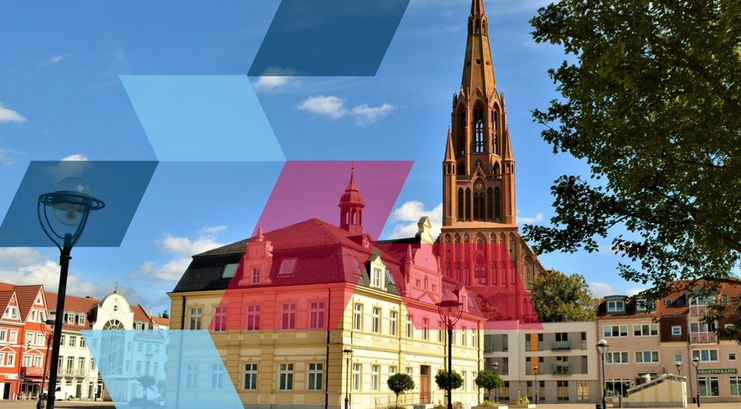Fresh approaches for a vibrant city center – At the end of the pilot phase of the Small Town Academy, representatives from six pilot projects met in Wittenberge, Brandenburg. The focus was on the question of how the future academy should be structured. Although many details are still open, the participants are already certain that the collegial exchange between municipalities will continue to play a central role in the future.
Around a third of German citizens live in one of around 2,100 small towns. However, given its position between rural and urban areas, this type of town has often been neglected in scientific and (financial) policy considerations. With the Small Town Academy, the Federal Ministry of Housing, Urban Development and Building (BMWSB) and the Federal Institute for Research on Building, Urban Affairs and Spatial Development (BBSR) now want to “open a new chapter”.
Collegial exchange still in demand
A foundation stone for the future academy was laid during the pilot phase: For two and a half years, six small town associations spread across Germany worked together in model projects on various focal points as part of the BMWSB’s “Experimental Housing and Urban Development” (ExWoSt) program. This pilot phase was concluded at the end of April in Wittenberge an der Elbe with an experience workshop. Representatives from local authorities, academia and politics discussed what offers “from small towns, with small towns, for small towns” could look like.
The nationwide approach has shown that small towns in Germany all face similar challenges.
It has become clear that the exchange between colleagues will play a central role in the future. In addition, advisory services for small towns and the formation of a stronger lobby for small towns are two of the goals that the stakeholders associate with the future Small Town Academy. Further model projects are planned which will address the challenges faced by small towns.
Meeting places and pop-up offers: Approaches for a lively city center
For two and a half years, aconium accompanied the pilot project “Innenstadt (be)leben!” (“Live the inner city!”), in which the small towns of Zwönitz (Saxony), Bönen (North Rhine-Westphalia), Demmin (Mecklenburg-Western Pomerania) and Münnerstadt (Bavaria) took part. The German Institute of Urban Affairs (difu) provided scientific support for the network. The four municipalities were united by the desire to gain new perspectives on their own small towns and urban development by looking “from the outside” and to translate these into concrete ideas for the development of their inner cities.
Even if there are still some unanswered questions regarding the concrete design of the small town academy, the exchange of experiences in the pilot projects has borne fruit. In the model project “Inner city living!”, it was not just about dialog: In Zwönitz and Münnerstadt, local meeting places were developed in the town center. Demmin and Bönen focused primarily on providing urban infrastructure to create pop-up offers in vacant spaces or pedestrian zones. These results, which were achieved through intercollegiate coaching, would not have come about without the program. This makes the need for new formats for municipal cooperation in small towns all the more apparent.

